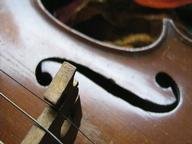Quiz Answer Key and Fun Facts
1. Who, in 1967, were the two founders of the band "Gong"?
2. What is the name of the first Gong album?
(Note: This was recorded in 1969.)
3. What is the name of the album with the tracks "You can't Kill Me"; "I've Bin Stone Before"; "Wet Cheese Delirum" and "Tried So Hard"?
4. What is the "Radio Gnome Invisible Trilogy"?
5. Which four musicians left Gong after the release of "You" in 1974 and the next release "Shamal" in 1975?
6. Now we see the fragmentation of Gong into a number of different bands with "gong" still used in their name. Which of these bands is not part of that Gong succession?
7. Which Gong musician led the band from 1976 onwards and renamed it to include his own name and to show his status within the band?
8. When Daevid Allen reformed the psychedelic rock band with the name "Gong" in 1992, which of these albums was their first release of this new line up?
9. Which of the later Gong albums has the tracks "Escape Control Delete", "Wacky Baccy Banker", "Robo-Warriors" and "Wave and a Particle"?
10. What is the name of the central mythological hero in the Gong story?
Source: Author
Kenners158
This quiz was reviewed by FunTrivia editor
kyleisalive before going online.
Any errors found in FunTrivia content are routinely corrected through our feedback system.
